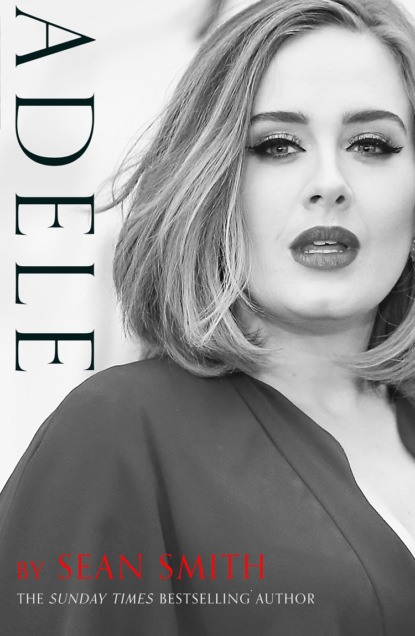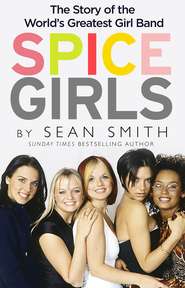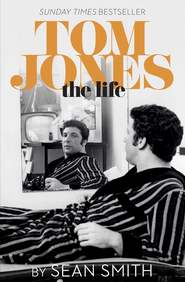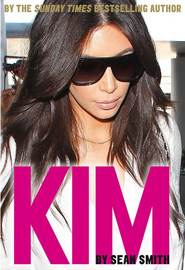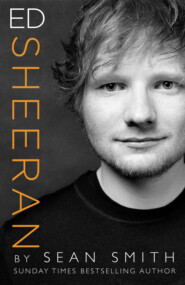По всем вопросам обращайтесь на: info@litportal.ru
(©) 2003-2024.
✖
Adele
Настройки чтения
Размер шрифта
Высота строк
Поля
‘Everybody was panicking now. So I sat down, took a deep breath and I thought, “Where is the little bugger?” Then I remembered the boat. We were on a boat trip the day before, so I made my way towards there. This woman came up to me and said, “Are you looking for a little girl in a yellow and pink dress?” She pointed me towards the landing point for the boat and there was Adele, just playing by the seaside. I picked her up and as you do out of fear and relief, I smacked her arse for her. And she cried and cried. She didn’t speak to me for days.’
While Penny was filling her home with the cool sounds of the time – 10,000 Maniacs and Jeff Buckley, as well as The Cure – the young Adele was falling for the acts that were causing a ripple in the playground. In the summer of 1996 that meant only one group for young girls: the Spice Girls.
Adele was soon dancing around the bedroom singing ‘Wannabe’, the band’s first record-breaking number one in July. Adele was among the millions around the world who could sing the song word perfectly without having any idea what ‘zig-a-zig-ah’ meant. She proved the point nearly twenty years later when she sang a spontaneous version with James Corden for his chat show’s ‘Carpool Karaoke’ feature.
For a while, the Spice Girls were the biggest band in the world, effortlessly breaking America with their energy, pin-sharp image and consumer-friendly brand of Girl Power. In Geri Halliwell, they found someone with a drive and flair for publicity that was completely new for female pop stars. Adele was transfixed by her fire and energy: ‘I just remember seeing Geri and being like, “Fuck it, I’m going to do that. I want to be Ginger Spice.”’
Ginger was Adele’s favourite, although, when she left the group, Adele switched her allegiance to Mel B (Scary Spice), who was equally mouthy and in your face. Despite being so young, Adele was inspired by the whole ‘Girl Power’ movement. The Golden Rules of Girl Power as defined by the Spice Girls were:
Be positive.
Be strong!
Don’t let anyone put you down.
Be in control of your own life and your destiny.
Support your girlfriends, and let them support you too.
Say what’s on your mind.
Approach life with attitude.
Don’t let anyone tell you that you can never do something because you’re a girl.
Have fun.
They could easily be the principles of Adele’s own life. To this day, the Spice Girls remain Adele’s favourite group. They did shape their own destiny, wrote their songs – or at least had important co-writing credits – and earned a huge amount of money very quickly. ‘Wannabe’ remains the biggest-selling single ever by a girl group, shifting more than seven million copies. It was number one in twenty-two countries, including the US, where it was top of the charts for four weeks.
The Spice Girls were a manufactured group, however, in much the same way as Girls Aloud and, more recently, Little Mix and One Direction, except for the fact that their audition process wasn’t televised for a TV talent show. There was another aspect that would catch the attention of Adele: three of them went to stage schools or ‘fame academies’, as they were popularly known. Before she became Posh Spice, Victoria Adams had attended Laine Theatre Arts in Epsom. Melanie Chisholm (Mel C/Sporty Spice) was sixteen when she was accepted at the Doreen Bird School of Performing Arts in Sidcup. Emma Bunton (Baby Spice) was given a scholarship to the Sylvia Young Theatre School in Marylebone. They would probably have all ended up at the BRIT School if it had existed in 1990.
Her father was unimpressed when Adele visited South Wales and told him of her enthusiasm for the Spice Girls: ‘They were her heroes but I used to take the mickey out of her about it. I used to say they were terrible, bloody awful.’ Fortunately, his lack of enthusiasm for Girl Power didn’t discourage his daughter.
By this time, the dynamic of Adele’s visits to Penarth had changed. Her grandparents were still there to fuss over her, but her father had a son, her half-brother Cameron. This time Marc was included on the birth certificate, although subsequently Cameron took the surname of his mother, Siobhan O’Sullivan. Marc set up home with them in Llantwit Major, a small resort seventeen miles west of Penarth.
Adele was thrilled to meet her little brother and, despite an age gap of seven years, has always been fond of Cameron in the manner of a big sister who’s the boss. ‘He looks like my twin,’ she happily observed. ‘We’re identical, same hair and everything. It’s bizarre growing up in a completely different city but then, when you see each other, it’s as if you’ve spent every day of your lives together.’
Adele got on fine with her father’s new family and occasionally would stay with them, but more usually she remained in Penarth with Nana and Grampy. Her legion of cousins grew even larger when Uncle Richard, who was still in London, started a family and had a son called Jasper, whom she also saw from time to time.
Marc, meanwhile, flitted from job to job. He worked another season in Barry before setting up a flower stall in Penarth. He subsequently went back to plumbing – this time on his own in Llantwit Major, not the family business.
Penny and Adele were on the move too: they relocated to Brighton. Adele still refers to herself as a Tottenham girl, but she hasn’t lived there since she was nine years old. Leaving Tottenham was one of two important events in Adele’s young life that would spell the end of her childhood. She commented, ‘I had a great childhood. I was very loved.’
Bizarrely, they cleared out of the flat in Shelbourne Road so abruptly that they left all sorts of possessions stashed away in the loft, including Adele’s electric guitar, suitable for ages six and up, which had a ‘special singalong head microphone for a really professional performance’, a keyboard, her tricycle and her birth card from the National Childbirth Trust.
It was a dramatic move for them both, leaving behind the security of close family in Tottenham. It meant an end to whiling away afternoons strolling on the banks of the River Lea to visit cousins. The river, which rises in the Chiltern Hills near Luton and flows through Tottenham on its way to the Thames, figured large in Adele’s childhood memories and is the title of one of the songs on the album 25. ‘It’s a filthy river,’ she once said with some affection.
Penny thought they would be happier in the trendy coastal town, which enjoyed a reputation as a centre for artistic pursuits. She had met an older man who owned a furniture shop and she went to work there, not only serving customers, but also taking a keen interest in furniture design.
Mother and daughter settled into a large flat in a Georgian house in East Drive, right next to the agreeable Queen’s Park, which boasts a large pond, ideal for feeding ducks, and a ten-minute walk from the seafront. Brighton should have been ideal for Adele, especially as she was so fond of Penarth. She hated it, however, complaining, ‘The people seemed really pretentious and posh, and there were no black people there.’
She was delighted when her mother embarked on a much more serious relationship and moved back to London. They settled in Brixton, near the border with Streatham in Cotherstone Road, an unpretentious urban street. They moved in with Penny’s new boyfriend, Simon, who worked as a computer programmer and became the stepfather in Adele’s life. He had been brought up in the Home Counties before starting his career in London.
Penny took him and Adele to meet the Welsh side of her daughter’s family and he impressed everyone with his easy-going, friendly nature. Marc Evans thought he was ‘a lovely, lovely chap’. He observed, ‘He was a really mellow guy. Nothing would faze him. He would just let it go over his head – he was that type of fellow.’
Adele was much happier back in the city until a second significant event occurred that was the most traumatic of her young life to date.
John Evans, her beloved Grampy, had been diagnosed with bowel cancer and the prognosis was poor. He was admitted to the Velindre Cancer Centre in Whitchurch, Cardiff, just before her eleventh birthday in May 1999.
Penny drove Adele up to see him several times during the last weeks as he slipped away. It was very hard for the young girl to cope. She recalled, ‘I was so uncomfortable with it that I nicked his wheelchair and was just going up and down the hospital corridors because I couldn’t face the fact that the love of my life, my granddad, was dying. I wish that I’d sat with him on the bed and given him a cuddle and told him how much I loved him, but I was just too overwhelmed.’
He died, aged fifty-seven, on 23 May and Adele was absolutely devastated. She said, movingly, ‘I painted him as this Jesus figure in my life. I loved him so much, more than the world.’
Despite being so grief-stricken, Adele bravely went with Penny to the funeral at the Tabernacle Baptist Church in Penarth. She wanted to be there not just for herself but also for her grandmother: ‘My grampy and my nana had always been my ideal relationship – ideal friendship, companionship, everything. Even though I’m sure there’s loads of shit I don’t know about, as their granddaughter it was bliss, just heaven. I was so, so sad.’
Even though she coped well on the day, Adele didn’t seem to be able to get over her sense of desolation. After a few weeks, her worried mother decided to seek professional help and took Adele to see a counsellor experienced in dealing with bereavement in children. Adele, it became clear, was a far more sensitive girl than people realised. She needed time to work through her feelings. It perhaps goes some way to explaining her heartfelt and intense response to the trauma of breaking up with people she loved – a mixture of anger and regret at being left and a heightened sense of loss.
Seeking something positive from her unhappiness, Adele told her mother that she was going to be a heart surgeon. She revealed her ambition: ‘I wanted to fix people’s hearts.’
3
The Miseducation of Adele Adkins (#ulink_66fc31ca-07e8-566a-b463-f97eb2426aa3)
Adele’s ambitions tended not to last long. Her mother was used to her wanting to be all sorts of things as she grew up. She had as many passing fancies as any other girl. At various stages, she wanted to be a weathergirl, a ballet dancer, a fashion writer and a saxophone player. Her mum would try to find a local class that might help, only to discover, as many parents do, that the following week it was all forgotten. Adele appreciated the support and encouragement: ‘She has always said, “Do what you want, and, if you’re happy, I’m happy.”’ She was certainly more content in an urban environment where she could make friends easily.
Adele may have wanted to be a Spice Girl, but she was never one to announce loudly in class that she was going to be a star. Her musical taste was evolving, however. Simon came home one day with a present for her – a video of the movie Flubber, starring Robin Williams. It was great fun, but after watching it a couple of times, the invention of a magic gel began to lose its appeal. At the same time, he had brought Penny a copy of the ground-breaking album The Miseducation of Lauryn Hill, the first solo album from the acclaimed singer of The Fugees. Penny played it constantly and soon Adele found herself singing along with the help of the lyrics sheet: ‘I remember having the sleeve notes and reading every lyric and not understanding half of them and just thinking, “When am I going to be that passionate about something to write a record about it?”, even though at that age I didn’t know that I was going to make a record when I was older.’
Her mum heard her singing Lauryn’s break-up song ‘Ex-Factor’ one day and asked her daughter if she understood what it was about. Adele had to admit that she didn’t have a clue. She did, however, understand the anguish in certain love songs: ‘I always loved the ones about horrible relationships. Those were the ones you could relate to and that always made you cry.’ Ironically, the song expressed painful sentiments that she would come to appreciate all too well in her future relationships, especially when Lauryn exclaims that ‘no one’s hurt me more than you and no one ever will’.
Adele was growing up fast in her inner-city surroundings. She and Penny had moved with Simon to a bigger flat in Tierney Road, close to the South Circular Road in Streatham Hill. They went less often to South Wales. Marc Evans explained, ‘She didn’t like to come to the house in Penarth so much after Dad died.’ She still kept in close touch with her beloved nana – and would continue to do so – but her memories were still very painful. She had seen less of her father during the previous couple of years, largely because he had a new family and a young son to support.
In any case, Marc was struggling to deal with his own series of traumatic events. Shortly after his father passed, his best friend Nigel died suddenly, aged twenty-nine. His relationship with Siobhan came to an abrupt end, so he left the home in Llantwit Major and, by his own admission, drowned his sorrows in far too much alcohol. He could offer no support or care to his daughter.
He took over the family business for a while, before taking a job fitting pipes on cruise ships. He grabbed the chance to see the world at a painful time in his life. He sent his children postcards from around the globe – South Korea, Malaysia, Singapore, Canada, the USA and the Mediterranean. It sounded glamorous that their dad was sailing down the Indian Ocean, especially when they heard his tales of pirates roaming the high seas. He always made sure he brought them back souvenirs from his trips away.
Back in South London, Adele was mixing with a much cooler group of friends. Until the age of eleven, she was influenced by what was in the charts – a top-ten girl listening to Britney, Backstreet Boys and Take That, as well as her favourite girl group. But as senior school approached, it became trendier to embrace R&B and Adele discovered new sounds in Penny’s collection – black artists with big soulful voices. As well as Lauryn Hill, she liked Mary J. Blige, Faith Evans, Faith Hill and, most of all, Beyoncé. During break time, she and her friends would have sing-offs, belting out ‘Survivor’ and ‘Say My Name’ at the top of their voices. She admitted, ‘I used to try and sound like Beyoncé and I would sing her Destiny’s Child songs all the time. Running with an R&B crowd was the easiest way to fit in and be considered hip.’ In the comfort of her own bedroom in Tierney Road, though, when there were no friends to impress, she would still have a sneaky listen to ‘Wannabe’.
There was a chance of a last hurrah for Adele Adkins, heart surgeon, when she began Year 7 at the Chestnut Grove School in Balham, a mile and a half away. She was enthusiastic about biology lessons, anxious to gather as much knowledge as she could for her chosen career. But she was surrounded by apathy and negativity and soon preferred to hang out with her girlfriends or simply play truant. ‘I gave up on it. My heart wasn’t in it,’ she remembered with unintentional humour.
Chestnut Grove is now one of the best and most in-demand academies in the area, but then it was much rougher. It was a ‘crap comprehensive’, according to Adele. It progressed rapidly under the leadership of head Margaret Peacock, who oversaw it becoming the country’s first visual arts college and achieving ‘Outstanding’ status in a 2008 Ofsted Report. You would have thought its emphasis on the arts would have been perfect for Adele, but she has stated in no uncertain terms that she hated it: ‘There were no aspirations and no encouragement there for anything other than getting to the end and getting pregnant.’
Such disenchantment is not what her deputy headmaster, Dominic Bergin, remembered about her: ‘She was just a very nice girl. I first met her in Year 8 and she was a real lively girl. She was friendly and she was bubbly. She was always a big personality. My wife Claudette used to teach her English and said she was kind, hard-working, motivated and academically able.’
Mr Bergin does, however, remember Adele as being a bit grungy. ‘She used to wear big canvas late-Nineties grunge trousers,’ like many girls at the time. That may have been her fashion of choice, but she also wore brand new Nike trainers and a baseball cap.
Chestnut Grove, undeniably, didn’t spot Adele’s potential. Mr Bergin concedes they would have done more to nurture her if they had. One of her complaints was that she wanted to sing and perform at school, but wasn’t encouraged to do so. Instead, she was told that she couldn’t become part of the choir without taking clarinet lessons. She recalled, ‘They gave me a really hard time.’ This doesn’t sound like the whole story, because Adele was showing signs of being musically proficient, more than just vocally. Learning the clarinet would actually serve her well in the future.
She was becoming more of a ‘street’ girl. Despite her natural desire to want to belong in her home patch of Brixton and Streatham, Adele never went off the rails. She gave the gang culture a wide berth and, as she has stridently asserted, ‘never touched an illegal drug in her life’ – not even a sly puff of something aromatic at a party. Her explanation for resisting the everyday vices of urban life is disarmingly simple: ‘There was never anything I was embarrassed about with my mum, which I think is the reason I never rebelled. We always spoke about everything.’ Another good reason was that she didn’t want any news of misbehaviour to reach her nana’s ears in South Wales. Drugs were a particularly sensitive subject: ‘We had a family death from heroin when I was younger and it frightens me, the whole thing.’ She has never elaborated on this out of respect for those most affected by the distressing turn of events.





